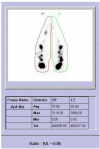Treatment experience in a patient of complex regional pain syndrome combined with secondary lymphedema of lower extremity
- PMID: 36746905
- PMCID: PMC9902636
- DOI: 10.17085/apm.22239
Treatment experience in a patient of complex regional pain syndrome combined with secondary lymphedema of lower extremity
Abstract
Background: Lymphedema is characterized by localized tissue swelling due to excessive interstitial space retention of lymphatic fluid. Lymphedema is easy to be misdiagnosed since itresembles other conditions of extremity swelling. We present a case of complex regionalpain syndrome (CRPS) type I with secondary lymphedema that was successfully managedwith spinal cord stimulation (SCS).
Case: A 39-year-old female patient came to our pain clinic with complaints of lower extremity pain and edema. To find out reason of leg edema, computed tomography of extremity angiography and blood test were performed. However, all of evaluations were normal. Lastlyperformed lymphoscintigraphy showed secondary lymphedema. SCS was performed and itshowed dramatic reduction subsequent to implantation of SCS.
Conclusions: We could successfully manage the intractable pain and edema in CRPS combined with lymphedema. If a patient presents different nature of edema, coexistence of other disease needs to be considered.
Keywords: Complex regional pain syndrome; Leg edema; Lymphatic fluid; Lymphedema; Lymphoscintigraphy; Spinal cord stimulation.
Conflict of interest statement
No potential conflict of interest relevant to this article was reported.
Figures



Similar articles
-
A novel method of edema fluid drainage in obstructive lymphedema of limbs by implantation of hydrophobic silicone tubes.J Vasc Surg Venous Lymphat Disord. 2015 Oct;3(4):401-408. doi: 10.1016/j.jvsv.2015.05.001. Epub 2015 Jun 30. J Vasc Surg Venous Lymphat Disord. 2015. PMID: 26992618
-
Spinal Cord Stimulation in Patients With Complex Regional Pain Syndrome: A Possible Target for Immunomodulation?Neuromodulation. 2018 Jan;21(1):77-86. doi: 10.1111/ner.12704. Epub 2017 Oct 24. Neuromodulation. 2018. PMID: 29064599 Clinical Trial.
-
Noninvasive evaluation of the lymphatic system with lymphoscintigraphy: a prospective, semiquantitative analysis in 386 extremities.J Vasc Surg. 1993 Nov;18(5):773-82. doi: 10.1067/mva.1993.50510. J Vasc Surg. 1993. PMID: 8230563
-
A Comprehensive Outcome-Specific Review of the Use of Spinal Cord Stimulation for Complex Regional Pain Syndrome.Pain Pract. 2017 Apr;17(4):533-545. doi: 10.1111/papr.12513. Epub 2016 Oct 14. Pain Pract. 2017. PMID: 27739179 Review.
-
The third circulation: radionuclide lymphoscintigraphy in the evaluation of lymphedema.J Nucl Med. 2003 Jan;44(1):43-57. J Nucl Med. 2003. PMID: 12515876 Review.
References
Publication types
LinkOut - more resources
Full Text Sources

